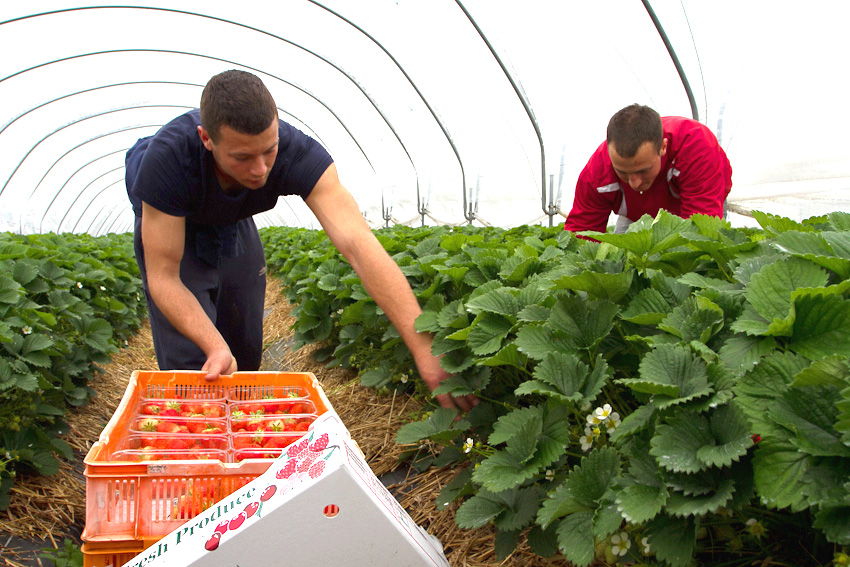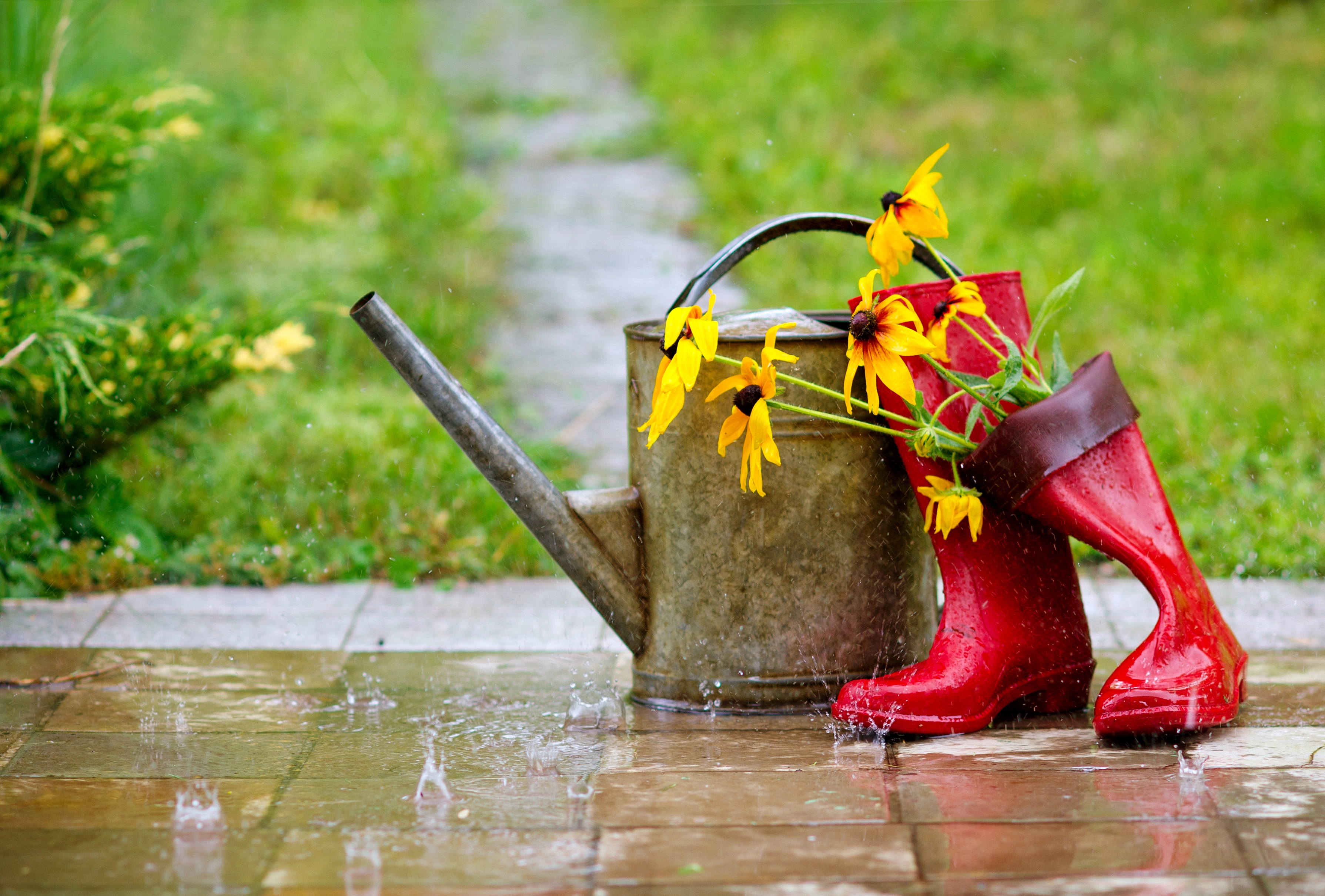

Strawberry fields and weather: Why the strawberry farm that supplies Wimbledon obsesses about the weather
The strawberry must have a very good agent. This year this most celebrated of summer fruits is booked to make countless VIP appearances at Jubilee street parties, Olympic gatherings, countryside picnics and posh teas. And don't forget Wimbledon fortnight, where around 28,000kg of strawberries will be consumed by umpires, Murray fans, royalty and Sue Barker. And every one of those will have been picked from the fields of Hugh Lowe Farms.
I'm standing with farmer Marion Regan, gazing down and across a patchwork sweep of lush green fields. The family business Marion runs with her husband Jon is located in Mereworth, a few miles outside Maidstone. Kent the 'Garden of England' has been drenched in rain throughout April, but at least this morning's downpour has been downsized to a drizzle.
My first question prompts a wry smile from the farmer. Does weather affect her business much? "Weather is the one overriding factor," says Marion. "We just obsess about it. In a perfect world we would have good rainfall through the winter to replenish our reservoirs and some cold weather to help kill the bugs. Then to establish the plants in the spring we would have a combination of rain and good light levels." During the summer months the ideal conditions are some gentle rainfall and temperatures of around 25degC. "Strawberries don't like it too hot. And we don't want high winds, because that can be a problem for the polytunnels.""
Sadly we don't live in a perfect world. Take this year's weather: "It's been a mad time," says Marion. "We had a really mild January, where we thought this would be an early season, followed by a very cold February. But that wasn't a bad thing. Fruit plants do need a certain number of cold days to reset their biological clocks. So actually February did help although it was a bit too cold. Then we had that really hot, dry March, so the soil heated up very quickly. It did look like we were on course to start very early. Then everyone started worrying about the drought, which is not something new to us, because we're always concerned about water and conserving it and then it just hasn't stopped raining since the beginning of April. That has slowed everything down, dropped the light levels, but we're still picking. Thanks to the polytunnels we are able to start the crop more or less on time. And, actually, the crops we planted in March and April have established really well due to the rains, because they're not covered yet. So it looks quite good for later in the summer."
Marion is remarkably philosophical about the British weather. Mind you, she has a weapon as her disposal: polytunnels. In the distance some of her fields boast large, rectangular tunnels covered in polythene. Before the advent of polytunnels, English strawberries were only available for a few short weeks, but now Marion can supply them from April through to October.
Marion offers to show me some of these polytunnels, under which grow row upon row of delicious strawberries and raspberries. As we slip and slide down the steep grassy field towards her 4x4, I learn that the free draining soils and mild climate make Kent ideal for growing fruit.
Marion doesn't only grow strawberries and raspberries in her fields. "We have about a third under fruit, a third under arable crops like barley and a third is actually land managed for the benefit of wildlife."Marion is a member of LEAF, a farming charity that works with food producers around the world industry to promote high environmental standards. LEAF's principles are based around Integrated Farm Management, which combines the best of traditional farming methods with modern technology. Its farmers work to provide natural habitats for wildlife, recycle waste, conserve energy and use natural resources like water efficiently.
To our right is an orchard of trees, which produce cobnuts, while over to our left are four beehives. "We have about 70 hives spread around the farm," says Marion. "A beekeeper looks after them. The deal is he has the honey and we have the pollination."
Marion and I are soon heading off down a lane to take a closer look at the strawberry plants. Hugh Lowe Farms grows a proportion of its strawberry and raspberry plants in coir grow-bags laid on top of freely draining beds. This allows the plants to come on earlier. "We use a coir-based compost, which is actually a bi-product of the coconut industry," says Marion. "That means we don't have to use peat, which isn't a sustainable source. Coir is better for the plants anyway."
Marion spots a few ripe strawberries missed by the pickers. "Try one," she says. I pop the strawberry into my mouth. It's absolutely delicious. "This is the Elsanta variety, which we do for Wimbledon, but this particular field will be finished by then."
Ensuring fruit from April through until October requires the staggered planting of two types of strawberry. "There are June-bearers, which actually come in May through to July depending on when you plant them," says Marion. "And then there are the ever-bearers, which just keep flowering all the way through the summer. We start planting them in about March, April. They start cropping in July and keep going all the way through until October."
The Elsanta is a June-bearer. "It peaks naturally in the last two weeks of June, so that's the one we do for Wimbledon."
Polytunnels are vital for this timetable. "What's great is that you can actually regulate the environment, but you're not removing the vagaries of the weather," says Marion. "So you are still very dependent on ambient temperature, light levels and particularly humidity, but without these covers on we'd have an awful lot of diseases which are spread by rain splash. There is also direct damage to the fruit from heavy rain. You get splitting of the fruit, which is unmarketable."
Of course, strawberries need water. Rainwater soaks into the soil, passes through a drainage system and collects in the reservoir at the bottom of the farm. It can then be used for irrigation.
As well as offering protection, polytunnels lengthen the season (thereby reducing the need for foreign imports) by harnessing the sun's energy and then preventing much of the heat from radiating back out at night. This allows planting earlier in the year. "Our soil temperatures go up in March, much earlier than in an open field," says Marion.
Another benefit is that strawberries can now be picked in all weathers. "That's absolutely crucial if you're supplying the supermarkets,"" says Marion. "If you don't have a 99% service level then they're just going to programme imports from overseas. So the reliability of the crops from tunnels is absolutely essential. They have to have a reliable supply chain."
The sides of the covers can be raised or lowered depending on the weather. "For example, if you get a hot, dry prevailing wind in the summer you can actually vent on the leeward side of the tunnel by pushing up the plastic," says Marion. "So you keep a constant humidity in the tunnel, which means the plants continue to photosynthesise - they don't stop making sugars. Whereas if you allow that wind to go across then it would create such a dry environment that plants would close down to conserve water."
Many beneficial insects enjoy the environment within the tunnels. These include both pollinators and predator insects that eat aphids, spider mites and other pests. "This means you don't need to spray so much."
We head off to another field. Driving back along the lane I ask Marion if weather affects the taste of the fruit. "Light is really crucial. Good light levels mean better sugars in the fruit. But there are ways round that. You can get very sweet tasting fruit provided you grow the right varieties. Some are more efficient than others at taking relatively dull light and producing sweet fruit."
Humidity has a huge impact on yield and quality. "If you have too wet a crop then you end up with the very overblown, pappy fruit you don't want a watery berry," says Marion. "And before we had tunnels, one of the biggest problems was rots and moulds. As a child I remember actually having to walk away from the fields that had gone completely mouldy""ówe just couldn't pick."
Strawberries have been grown on this farm since 1893, when Marion's great-grandparents came to Mereworth and settled at Barons Place. Marion's grandmother, Frankie Lowe, clearly remembered the strawberries in baskets being taken by train from Wateringbury to the family-owned wholesale stall in Covent Garden. Marion's father, Hugh, took over in the early 1950s. He retired in 1995, but remains company chairman, while Marion and Jon now run the business and live on the farm.
We arrive in a field where a team of pickers are hard at work. "We start at 5am and, particularly on a hot day, try to be finished by midday, because by the afternoon the fruit is very tender and bruises easily."
Marion looks on with admiration. "We're nothing without our pickers," she says. "You can grow the most fantastic crop in the world, but there's no point if you can't pick it. We try to do everything in a highly planned way, but it's still a natural crop and can come all at once or be delayed. Matching the number of people to the amount of crop is quite an art."
Hugh Lowe Farms employs about 40 people year round. This number is swelled from April by up to 450 seasonal workers. Many are students recruited from overseas agricultural universities. "That's done by an organisation called HOPS, which is run by the National Federation of Young Farmers Clubs," explains Marion. "They recruit people mainly but not exclusively from Eastern European countries, who commit to coming here for about three or four months to pick fruit during their university breaks."
Hugh Lowe Farms has supplied strawberries to the Wimbledon championships for 20 years, and this year will also supply the Olympic tennis tournament. "There is a lot of pressure, because you absolutely can't go short on that order, and it needs to be top quality."
What is the benchmark for a Wimbledon strawberry? "It can't be too enormous, you want a smallish berry that you can balance on a tea spoon," says Marion. ""So they have quite strict requirements on size. They don't want huge, great overblown berries" also because people expect a certain number in a bowl. It has to be really sweet, good tasting and without any blemishes."
The strawberries are picked to order and everything must run like clockwork. "They want the fruit within 24 hours of it being picked, and on some days they can have it the actual day it was picked, because we start at five o'clock in the morning."
Marion has twice been to Wimbledon. "Last year, my son and I were invited by the chairman of the All England Tennis Club. We had a wonderful day. My son is a big tennis fan, but also we were able to see our fruit being eaten there. Wimbledon is special and so you do want it to be right. It's the classic English summer event and is so closely associated with our bread and butter."
Wimbledon is also associated with rain delays. Has the weather ever conspired against Marion during the fortnight? "Since using tunnels we've always been able to deliver," she says. "Wimbledon invested all that money in covering Centre Court and for exactly the same reason we cover our fruit with the tunnels."
Sudden downpours might actually boost strawberry sales, with tennis fans seeking to pass the time before play resumes. So perhaps a certain someone won't be too devastated should the skies open over SW1 this year, even if an outbreak of rain does result in an outbreak of Cliff Richard."




